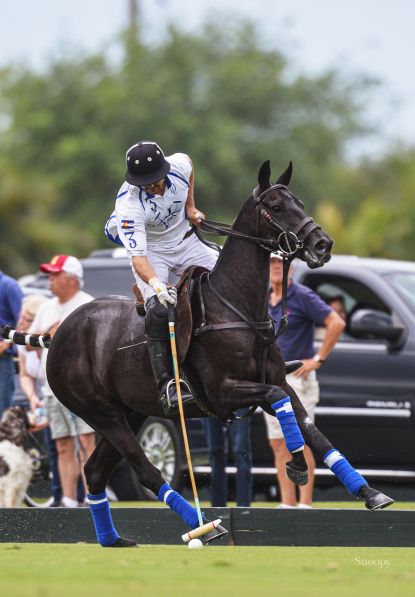Wembley: A polo legends legacy preserved through cloning
In the illustrious tapestry of polo history, certain horses etch their names in the indelible ink, leaving a legacy that transcends the bounds of time. One such luminary is Wembley,...
In the illustrious tapestry of polo history, certain horses etch their names in the indelible ink, leaving a legacy that transcends the bounds of time. One such luminary is Wembley,...

In the illustrious tapestry of polo history, certain horses etch their names in the indelible ink, leaving a legacy that transcends the bounds of time. One such luminary is Wembley, a remarkable polo pony whose brilliance not only graced the field but also sparked a ground-breaking chapter in equine reproduction.
In this blog post, we will explore the extraordinary legacy of Wembley, the unique challenges posed by his status as a gelding, and the pioneering decision of Valiente Polo Team to clone him for the purpose of extending his impactful genetic lineage.
Wembley: A Polo Icon
Wembley’s journey into the annals of polo fame began with his exceptional qualities that set him apart as a true icon of the sport. Wembley was bred by Ellerston out of an extremely talented Australian thoroughbred mare, Darkie, by Catisfield Kid who was sired by Comedy Star who lineage went on to produce many high goal ponies for Alan Kent. Purchased my Memo Gracida from Ross Ainsley in England, Wembley went on to play with nine different ten goalers throughout his career including travelling back and forth between the US Open and the Argentine Open for Bauti Heguy, retiring sound at 23 years of age. He now has an award named after him in America awarded to horses showing high performance and longevity in their high goal career. Renowned for his speed, agility, and intuitive understanding of the game, Wembley became a pivotal player in numerous victories on the polo field. Guided by skilled players, he showcased a level of athleticism and intelligence that not only contributed to his team’s success but also garnered admiration from polo enthusiasts worldwide.
The Gelding Dilemma
Despite his extraordinary talent, Wembley faced a unique challenge that posed a potential limit to his contribution to polo breeding programmes- he was a gelding. Wembley’s genetic legacy would typically be restricted to his achievements on the field, as he could not naturally sire offspring.
The Pioneering Decision to Clone
Recognising the extraordinary impact Wembley had on the sport and the desire to extend his genetic lineage, Valiente made the decision to embark on the pioneering journey of cloning. Cloning, through Somatic Cell Nuclear Transfer (SCNT), provided a revolutionary solution. The process involved using a somatic cell from Wembley and transferring its nucleus into an enucleated egg, ultimately producing an embryo genetically identical to the esteemed .
Extending Wembley’s Impact
The decision to clone Wembley was not merely about replicating a successful athlete; it was a strategic move to perpetuate the exceptional qualities that defined him as a polo legend. Through cloning, Wembley’s genetic legacy could be extended, and his impact on the sport could continue to resonate through future generations of polo ponies.
The clones: Carrying Forward a Legend
As the two clones of Wembley enter the polo scene, they carry with them not only the genetic heritage of a legendary gelding but also the potential to contribute to the evolution of the sport. Their presence on the field becomes a testament to the successful intersection of tradition and cutting-edge technology, showcasing the enduring impact of a horse that captivated hearts and inspired innovation.
Wembley’s Timeless Presence
Wembley’s legacy, preserved through the remarkable process of cloning, stands as a testament to the unwavering commitment to excellence in the world of polo. As his bloodlines weave their way across polo fields, they become living embodiments of a legend whose influence refuses to be confined by the conventional limitations of equine breeding.
In the tale of Wembley, the echoes of his prowess and the ground-breaking decision to clone him reverberate through the sport of polo, shaping a narrative that speaks to the enduring connection between horse and rider and the limitless possibilities that emerge when tradition and innovation converge.
Your cart is currently empty.
Start Shopping